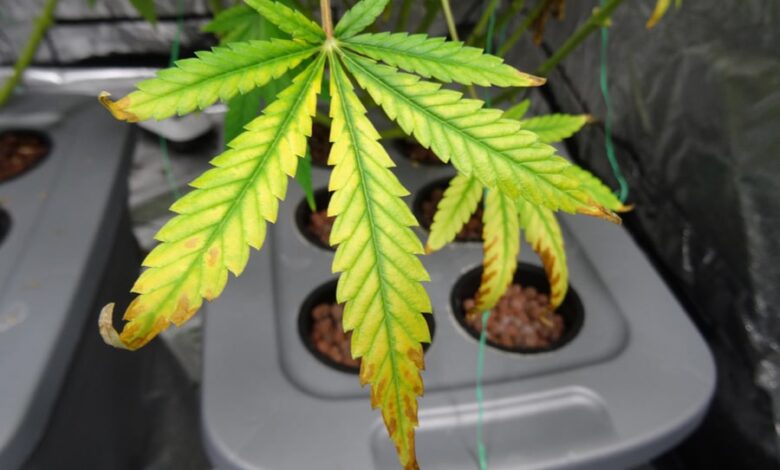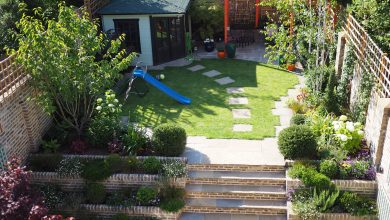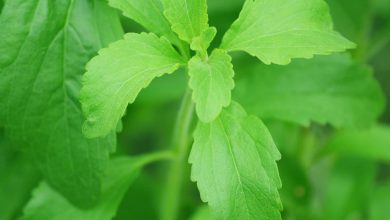Light and plants: symptoms of excess and deficiency due to sun exposure

Light is one of the most important factors that we must take into account when planning and maintaining a garden (whether urban or in the country). Exposure to light will be decisive for our plants to grow and give flowers, seeds and fruits.
In this article we remind you what photosynthesis is and how you can identify the symptoms of excess or defect of light that your plants may present.
> Read How to create your field notebook to better manage your garden
What is photosynthesis?
Thanks to chlorophyll, which is a green pigment that captures sunlight, plants transform light energy into chemical, converting atmospheric inorganic carbon (CO 2 or carbon dioxide), water and mineral salts in the soil into carbohydrates that provide them with the necessary nutrients for their development.
In other words, plants are capable of making their own food from non-food sources . It is said then that they synthesize organic matter from inorganic elements, so that plants are capable of producing their own food, they are autotrophic beings. But not only that. This process, known as photosynthesis, generates energy from which other living beings benefit (they consume and consume plants and other living beings that feed on plants), and produces the essential oxygen for their respiration.
In photosynthesis, plants capture water and nutrients from the soil through their roots and rise to the aerial part (leaves) to join CO² and light energy and thus obtain food. After this process, the plants emit oxygen into the atmosphere.
The influence of light on crops depends on their composition, intensity or duration. All elements that vary according to the time of day, the season of the year, the orography, the climatic conditions, the orientation of the orchards … and whose effects differ from one horticultural variety to another.
Symptoms of deficiency and excess of light in plants
As living beings that they are, plants suffer from both malnutrition and indulgence.
-The lack of light in plants usually results in less development:
- They do not grow or they do it slowly
- They bend and stretch abnormally looking for the sun
- Stems get thinner
- The distance between the knots is lengthened (threading)
- Leaves yellow
- They do not emit flower buds or these fall or do not open and, consequently, do not fructify.
-Neither excess light favors the development of plants, these are some more common symptoms of excess that your plants are exposed to too much light:
- They collapse, they cannot synthesize more organic matter
- Dehydration deforms their bearing, as they tend to lean in the opposite direction to that of light
- The leaves lose their color, dry out, show brownish spots and even burns that also affect the fruit, if the plant has come to bear fruit, because floral abortion is not ruled out either.
Both the excess and the defect of light, and especially the first, can cause virus problems or favor the development of certain pests .
> Read The 15 best ecological remedies for aphid infestation
In addition, as we have already mentioned, the effects derived from light are influenced by other factors, such as temperature. Hence, the orographic situation, the climate and the solar exposure to which the plant is subjected are determining factors in the development of the crops. A temperate climate is not the same as cold, nor a hotter or colder season, nor a type of crop more or less resistant to hot, cold, humid or dry temperatures.
What is the best orientation for a garden?
As important as knowing the conditions of the place where our garden is located and its size is knowing the light and heat needs of the plants we want, or can, grow in it in order to allocate the most appropriate space for them.
As a general rule, it is established that the ideal orientation of a garden is the south or, at least, the one that receives more hours of light per day.
If your growing space is not facing south, try to avoid locations where nearby trees, shrubs, or buildings cast their shadow over the crop. Hedges and trees that, on the other hand, well located, will protect our garden from the winds that can hit it.
If we grow in rows or terraces, these must be oriented north-south so that the plants on one side receive direct morning light and those on the opposite side in the evening.
Does your garden receive few hours of light? Is there a way to optimize the few hours of light that the plants receive? In case your urban garden does not receive direct light or exposure to sunlight is for a few hours, you can take advantage of a nearby wall, if there is one, to reflect solar radiation. Of course, we will have to paint it white or whitewash it.
Of course, we will always take into account the most convenient season of the year for each crop depending on the geographical situation in which we find ourselves. Some fall and winter crops in warm areas, such as artichokes or lima beans, are usually summer crops in cold areas. Here is the sowing calendar to guide you.
In any case, as a general normal and according to your demands in light, we can say that they are:
Light demanding crops requiring direct exposure:
- Tomato
- Pepper or chili
- Potato or potato
- Eggplant
- Cucumber
- Melon
- Watermelon
- Zucchini or zucchini
- Pumpkin or squash
- Peas or peas
Crops that grow in less light or in semi-shade
- Endive
- Lettuce
- Chard
- Jewish
- Spinach
- Cabbages
- Celery
- Borage
- Basil
- Parsley


![Photo of Transplant Rosemary: [Steps to follow and Data to take into account]](https://www.complete-gardening.com/wp-content/uploads/2022/08/transplant-rosemary-steps-to-follow-and-data-to-take-into-account-390x220.jpg)
![Photo of Orange Tree Diseases: [Characteristics, Types, Detection and Treatment]](https://www.complete-gardening.com/wp-content/uploads/2021/06/51qtDPtMyML-390x220.jpg)
